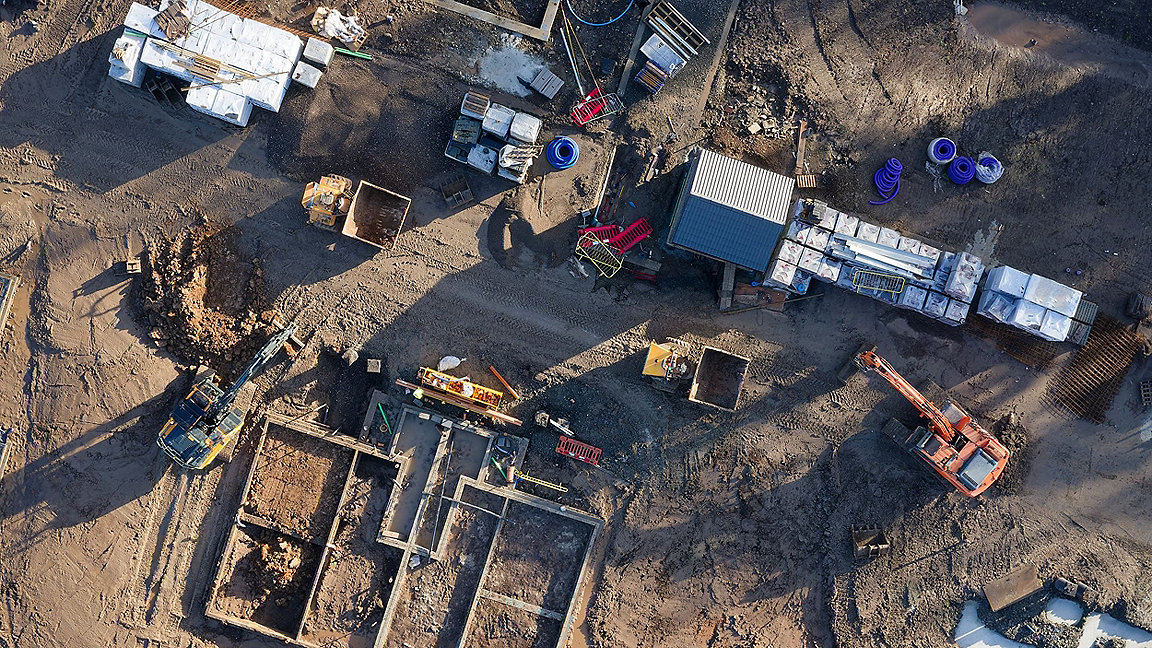
Productivity in UK construction has lagged far behind every other sector for several decades now.
However, in recent years factors such as Brexit, COVID-19 and an ongoing skills shortage have combined to challenge the industry even further.
Labour shortages affect quality of work and timeframes
One feature common to all causes of low productivity is labour shortages.
In January, the Construction Industry Board (CITB) reported that 225,000 extra workers would be needed to meet construction demands by 2027 – nearly 45,000 a year.
Anthony Hynes, director and head of project management at developer and asset manager Chancerygate, has seen project completion timeframes lengthen significantly in recent years.
One of the issues facing the company and the sector alike has been working with third-party statutory service providers for utility connections, he says. Although he notes that orders are being placed even before contractors are taken on, getting services connected in a timely manner is a challenge.
'A key factor we have noticed underpinning delays throughout the development cycle is labour availability,' he says. 'This has become more pronounced after Brexit and after COVID-19 as workers have left the UK labour market.
'Workforce shortages affect all developers, but for those with specialised construction projects there are some niche trades that are particularly hampering productivity.
'An example of this is cladding labour, which Chancerygate requires for urban logistics units. With the increasing need for such accommodation from occupiers, demand for cladding has increased exponentially. However, the level of labour trained to install this hasn't grown.
'This has led other trade contractors to switch to installing cladding – a decision driven by the significant fees that can be commanded due to the high demand. In turn, not only has this exacerbated shortages for other trades but it has also led to an increase in the risk of poor-quality cladding, which is rejected by inspectors given that it has been installed by non-specialists. This is something that we allow for across all our projects.'
Director of major projects at consultancy KPMG Holly Davis notes that although there have been significant changes in the way construction is designed and in the technology used in everyday tasks, work on site is still the same as ever.
'On-site construction work remains fragmented; 94% of UK construction companies employ fewer than ten people each,' she states.
Ageing industry needs to focus on next generation
In addition, Davis notes, construction is carried out 'by an increasingly ageing, overwhelmingly male workforce, exacerbating issues in securing labour. There are many systemic changes needed to increase productivity.'
As long ago as 2015, the Chartered Institute of Building (CIOB) identified the lack of young people entering the industry as the most significant factor contributing to the ageing construction workforce. Then as now, insufficient planning was devoted to addressing this issue.
Davis believes there have been a series of failures in attempts to attract a new generation to the sector. 'Post-16 education in vocational skills has lost its way,' she claims.
'There has been a huge drop in apprenticeships, and the T levels rollout has stalled, resulting in Rishi Sunak's party conference announcement that they will now to be rolled into the Advanced British Standard. All this means it is not an attractive route into industry for young people.'
Hynes echoes this sentiment, stating that there are some programmes already in place to address shortages, but they need better support. 'A significant increase in the number of apprentices can help redress this shortage,' he says.
'While there are legal obligations such as section 106 agreements in planning applications that require the employment of apprentices, attracting enough people is a significant, long-term task.
'At a grass-roots level, engagement is needed to promote careers in construction and trades to prospective apprentices. Across the entire construction sector, increasing incentives for tradespeople to help retain and increase the labour pool should be a top priority.'
'A redesign of education pathways can empower young people across the country to be part of a transforming industry'
Modern methods of construction must fulfil potential
Davis picks up the theme: 'There is huge opportunity to design exciting, digitally literate career pathways that catalyse industry growth; modern methods of construction (MMC) need modern skills. A redesign of education pathways can empower young people across the country to be part of a transforming industry.
'Construction is characterised by long supply chains, with multiple interfaces between trades, carrying out bespoke work. Firms are also disproportionately concentrated in London and the South East, giving the UK an uneven distribution of access to the industry.
'The UK government has recognised that buildings providing the same services – such as hospitals, schools and prisons – should be the same in Norwich, Newcastle and Newquay.
Standardisation of design and product modularisation using factory manufacture can make these projects up to 25% faster, with a corresponding saving in cost. But we cannot expect significant shifts in productivity so long as construction technology remains fundamentally the same as it was in the 1990s.'
UK managing director for real estate at Turner & Townsend Chris Sargent goes further, stating: 'The adoption of MMC remains a question of when, not if. Unlocking this productivity boost requires us to reflect on how we nurture the industry and normalise the application of MMC in the way we build.
‘I remain optimistic because the opportunity is so great and the need so pressing. If you look at the pressures facing construction – rising costs, restricted labour pools and the need to improve quality – MMC can provide answers.
‘The industry has moved on from using the term "pre-fab", with its negative connotations, towards a much more sophisticated approach to component-led design, off-site manufacture and on-site assembly – all underpinned by digital technology.
'Beyond the obvious benefits of speedier delivery, easier construction and reduced cost thanks to economies of scale in production, MMC allows for greater reliability and precision, enhancing quality and consistency.
There are also sustainability benefits, with reduced embodied carbon in manufacture and improved thermal integrity and airtightness.
'Turner & Townsend's own work on a recent healthcare project has shown this first hand. A fast, high-quality, sustainable upgrade to a UK hospital was made possible by off-site manufacture of 650 pre-assembled modules and 17 prepacked mechanical, electrical and plumbing pods.'
However, Sargent still recognises that 'accelerating the use of MMC across the industry remains a complex challenge. We need to invest in building capacity and a UK supply chain on the scale that the industry needs. The New Hospital Programme is a perfect example of how government can help to lead.
‘Whitehall departments are in a unique position to target capital spend in a way that promotes the use of these new techniques, to the point where the private sector fully seizes the opportunity too.'
He concludes: 'To build confidence in MMC, we must work to showcase its current successes, as well as coordinating with government to set out a long-term pipeline of programmes using such methods that will encourage investment to build up the supply chain.
The potential benefits to our sector and our world are vast if we can work together to grasp the opportunity.'
Anthony Hynes is a director and head of project management at Chancerygate
Contact Anthony: Email
Chris Sargent is UK managing director for real estate at Turner & Townsend
Contact Chris: Email

